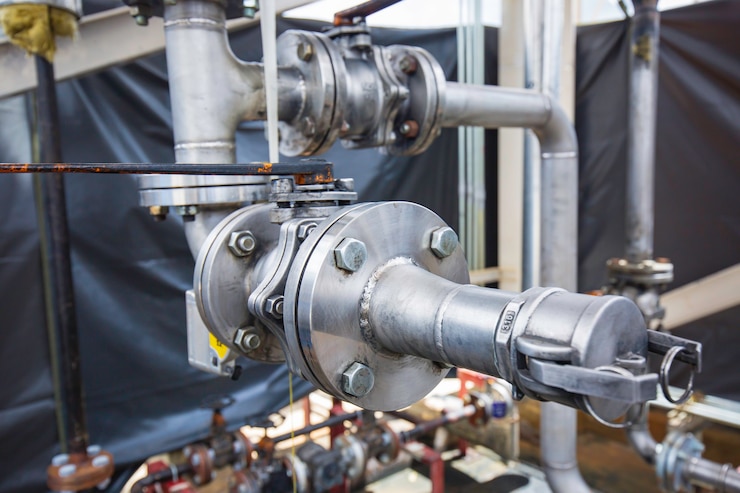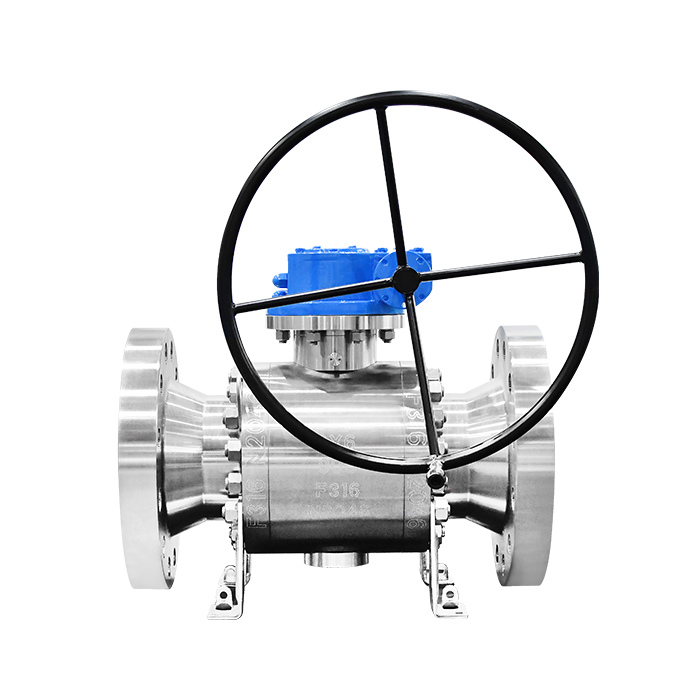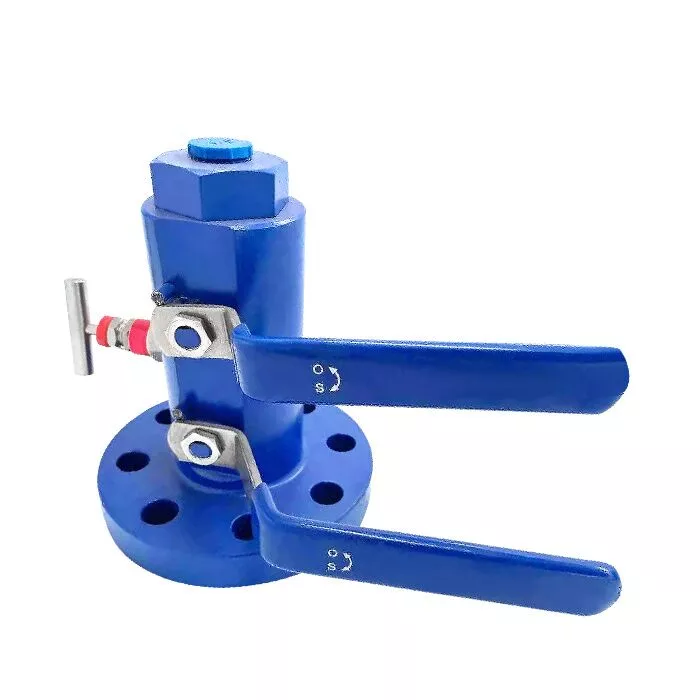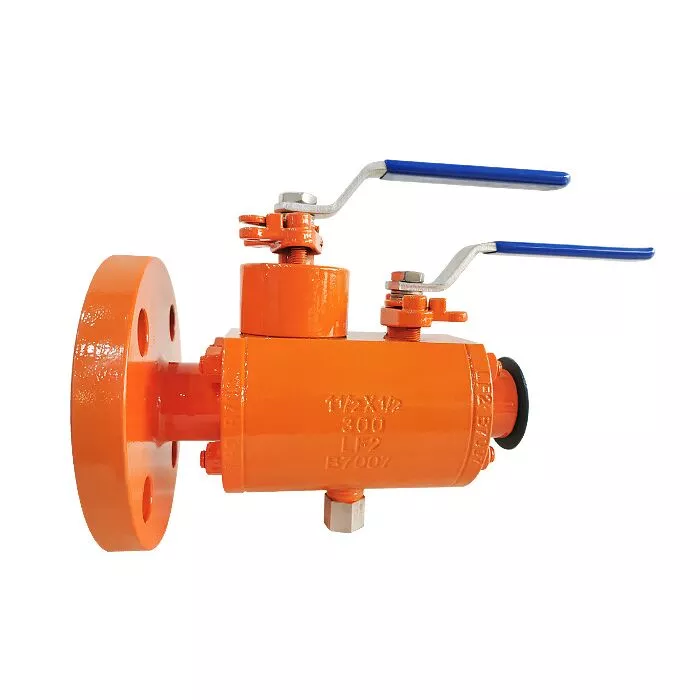Selecting the right valve for any given industrial operation is no small task. Valves are critical components in a wide range of applications, from power plants to water systems and more. The right valve must be selected to ensure optimal performance and safety. That’s why it’s important to understand the fundamentals of valve selection before making a decision.

In this valve selection guide, consumers will discover the basic considerations of valve selection and learn how to identify the ideal valve for different applications. From valve types to construction material and operational requirements, this guide offers the essential information that every consumer needs in order to confidently make the best choice.
Select the Valve Type
Depending on the service medium and application requirements, some specific valve selection chart needs to be evaluated when selecting a valve including flow direction, temperature and pressure requirements, type of actuator, and leak tightness.
Selecting the right valve type is essential for a successful piping system. Valve types can be classified according to the media they regulate, such as liquid and gas, and by their internal construction, such as globe and gate valves.

Industrial Ball Valve
Industrial ball valve offers a shut-off point for the flow of liquids or gasses. The ball valve is designed to remain shut off until its lever is manually turned to open it. This allows for easy control over the flow of fluid or gas through a pipeline. It also offers extremely tight sealing capabilities and is not prone to leakage due to its quarter-turn operation mechanism.
Needle Valve
This particular valve is commonly employed to manage the flow of liquids, gases, and other substances. Its composition comprises a threaded needle with a gradually narrowing tip, typically crafted from brass or stainless steel. The valve operates through a gradual adjustment of the aperture at the needle’s base as the user rotates the stem of the valve.
Globe Valve
This consists of a spherical body, which contains an internal seat surrounded by a disc-shaped plug. The valve can be opened or closed by turning the plug against the seat, which regulates the amount of flow through the valve. Globe valves are widely used in industrial applications because they can handle high pressures, temperatures, and viscosities, and they are leak-proof when properly installed.
Plug Valve
This particular kind of quarter-turn rotary valve utilizes a cylindrical or tapered plug to control the flow of liquids or gasses. The plug generally has one or more groove openings or passages, which can be aligned with an inlet and outlet port on either side of the valve body, allowing media to pass through the valve.
Diaphragm Valve
This valve variant leverages a pliant diaphragm to manage the flow of liquids or gases. The diaphragm is fashioned as a circular disk with a central aperture and links to a stem that connects to the valve body. When put into use, the pressure from the liquid or gas under control keeps the diaphragm sealed against the valve seat, ensuring precise regulation of the flow.
Butterfly Valve
A butterfly valve is a kind of quarter-turn valve that uses a disk with a rotating shaft to control the flow of a fluid. They are commonly used in industrial applications and are available from various butterfly valves supplier worldwide. The disk is positioned in the middle of the pipe or other passage and rotates so that when it is perpendicular to the flow, fluid is able to pass, and when it is aligned with the flow, fluid can not pass.
Butterfly valves are used extensively in industrial applications such as controlling the flow of liquids, gasses, and vapors. They also find extensive use in water treatment plants and wastewater systems, due to their excellent capabilities in regulating and throttling fluid flows.
Check Valve
A check valve is a kind of valve that allow fluids to flow in only one direction. It has applications in both residential and industrial settings. Check valves help prevent backflow, which happens when pressure forces fluid to move backward rather than forward.
Relief Valve
A relief valve is a safety device used to protect a plumbing system from damage due to excessive pressure buildup. It allows controlled release of pressure when a predetermined level is exceeded, thus protecting the system and its components from damage caused by too much pressure.
Solenoid Valve
A solenoid valve is an electrically powered valve used to control the flow of liquids, gasses, or other fluids. It consists of a cylindrical coil of wire containing a ferromagnetic core surrounded by an outer shell of non-magnetic material. When electricity is passed through the coil, a magnetic field is created which causes the core to move and open or close the valve. The core is secured to a plunger that also moves and connects with the valve opening/closing mechanism.
Gate Valve
It is a linear motion valve, which works by removing a round or rectangular gate/wedge from the fluid’s path. In most cases, the gate is linked to an actuator, which opens or closes the valve in accordance with a signal from the controlling system. Gate valves are most commonly used for isolation purposes, as opposed to control purposes.
Selecting Valve Seat Material
When selecting valve seat material, there are several important considerations. The material must be able to withstand high temperatures and pressures. It should also be able to maintain a good seal between the valve and seat. Here are some considerations on selecting valve seat materials.

Pressure
When choosing a valve, valve seat material pressure should be considered. It affects the performance of the valve and can ultimately determine its longevity. The valve seat material should be chosen based on the specific application, the pressure range of the system, and the working environment.
Temperature
The temperature range and pressure range of the system should also be taken into account when selecting a valve seat material. The material should be able to withstand both low and high-pressure ranges without becoming damaged or deformed. Different materials have different properties, such as thermal conductivity, so it’s important to select a material that can handle the environment in which it will be operating in.
Size Range
The size range of these materials is an important consideration in their selection. Generally, many valves factory across the world have their valve seat material be able to accommodate a significant range of sizes, from very small to large.
For smaller valve sizes, bronze and stainless steel are usually well-suited. For larger valve sizes, cast iron or hardened steel are often used. They provide maximum sealing strength, excellent rigidity, and long service life for heavier-duty applications.
Corrosion Resistance
One of the key factors in selecting a suitable material for a valve seat is its corrosion resistance. Corrosion can significantly reduce the efficacy of the valve and cause extensive damage, so selecting a material that offers excellent corrosion resistance is essential.
Ability to Seal
The sealing performance of a valve seat relies on two primary factors: its type of seal and its ability to form a strong bond between the seat and the valve body. The amount of force applied to the seal and the amount of contact area between the seat and the valve body will determine the type of seal needed for a particular application.
Wear & Tear Resistance
Wear and tear resistance is an important factor to consider, most of the industrial valve company already offer this factor to their valve products. Valve seats are subject to extreme temperatures and high pressures, which can cause them to wear out quickly. To guarantee optimal performance and longevity, it is essential to select a material that is durable and abrasion resistant.
Cost-Effectiveness
Cost-effectiveness when selecting valve seat material is crucial to select the most appropriate material for the application so that the desired performance can be achieved, while also considering its cost. Cost considerations will include not only the initial purchase price of the valve seat material, but also its lifetime costs such as installation, maintenance and energy consumption.
Conclusion
Valve selection is an important task for any industrial operation. By having an in control valve selection guide and making an informed decision, consumers can ensure that their chosen valve meets their specific requirements and provides optimal performance.
Dombor is an industrial valves supplier that specializes in providing tailored solutions for a variety of industries. With our wide range of products and experienced team, we have become a leading name in the industry. Our company provides a comprehensive selection of industrial valves ranging from basic butterfly valves to ball valves.

Our products are designed to meet the highest standards and are certified by global third-party certifiers. Furthermore, we offer customized valve solutions for specific requirements, allowing customers to get the exact product they need. Contact us today for any valve solution for any industrial applications.









